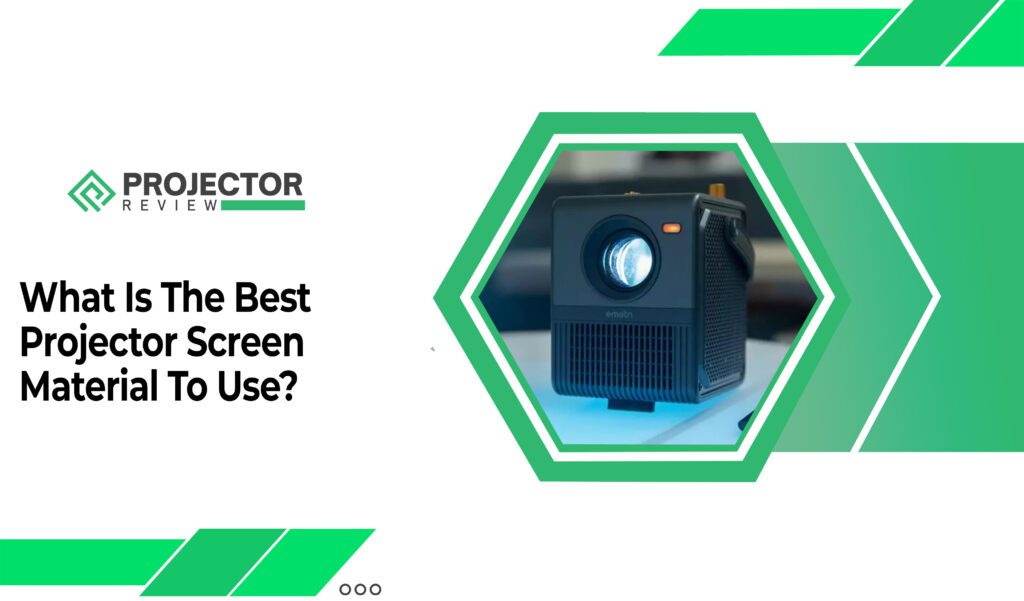Welcome to the world of modern projection technology, where visuals and dynamic presentations have become indispensable in both professional and personal settings.
In this fast-paced digital era, projectors have been used as powerful tools that breathe life into our ideas, and audiences, and revolutionize the way we communicate.
With substantial investments in these cutting-edge devices, understanding how to install projector screens in your home, has become a paramount concern for individuals and organizations alike. A projector’s lifespan directly impacts its cost-effectiveness, sustainability, and overall user experience.
In this comprehensive guide, we delve into the key factors that influence projector longevity, offering valuable insights and practical tips to extend the life of your projectors.
Whether you’re a seasoned tech enthusiast, a savvy business professional, or a dedicated educator, join us on this journey to unlock the secrets of maximizing your projector’s performance and ensuring it remains a reliable companion for years to come.
How long does a Projector Last?
On average, most projectors can last between 2,000 to 10,000 hours of lamp life. However, advancements in technology have led to the development of projectors with longer-lasting light sources built with good materials, such as LED or laser projectors, which can last up to 20,000 hours or more.
It’s important to note that the lamp or light source is just one component that affects the projector’s lifespan.
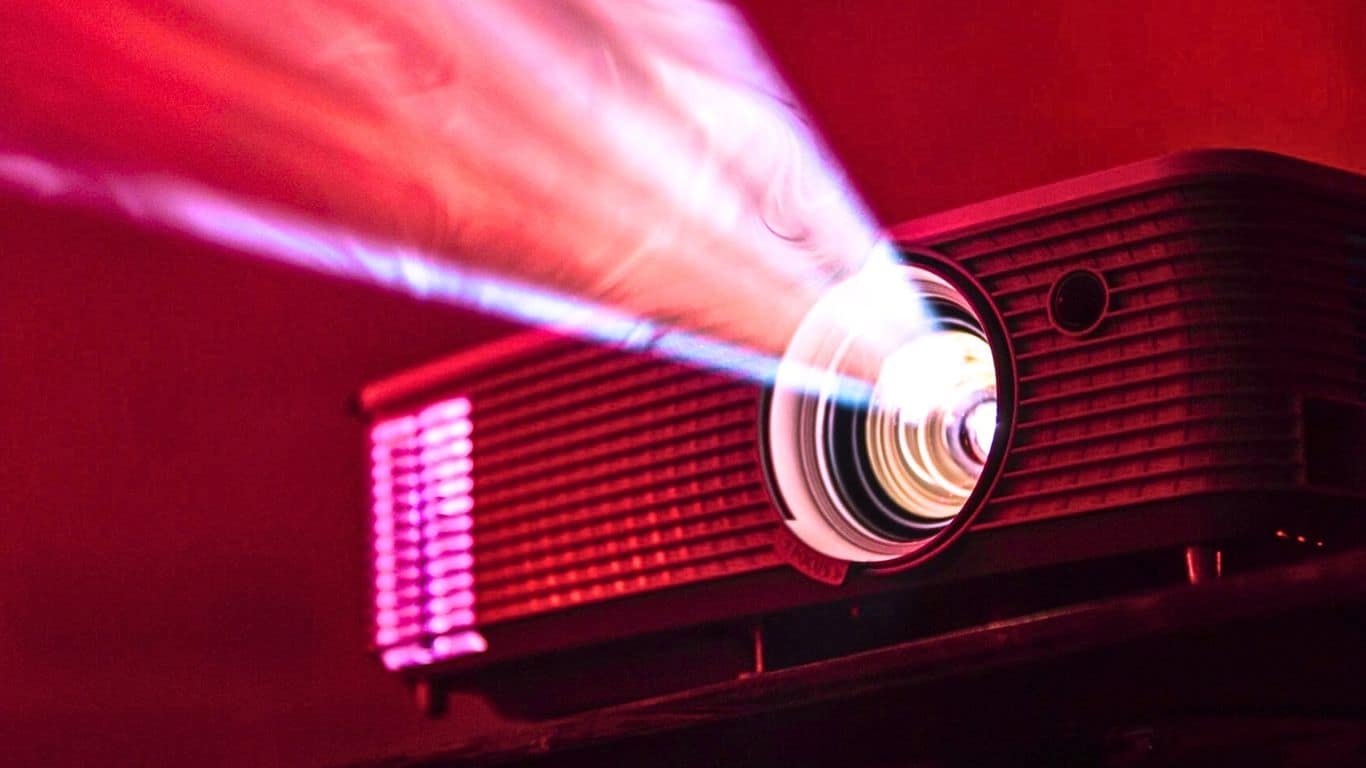

Other parts, such as the cooling system, fans, and electronics, can also impact its longevity. Regular maintenance, proper usage, and keeping the projector in a clean and dust-free environment can significantly extend its lifespan. To get a proper advantage you must know how many watts a projector uses.
For heavy users, the projector’s lifespan might be shorter, while occasional users may enjoy a longer-lasting device. Be sure to check the manufacturer’s specifications and guidelines for your specific projector model to get a better understanding of its estimated lifespan.
Types of Projectors
Projectors come in various types, each designed to cater to specific needs and applications. Here are some common types of projectors:
LCD (Liquid Crystal Display) Projectors
LCD projectors use three LCD panels to create and project images. They are famous for their vibrant color reproduction and sharp image quality. They are suitable for business presentations, classrooms, and home theater setups.
LCoS (Liquid Crystal on Silicon) Projectors
LCoS projectors combine the features of both LCD and DLP projectors, offering excellent color accuracy and image clarity. They are commonly used in high-end home theaters and professional installations.
LED Projectors
LED projectors use light-emitting diodes as their light source instead of traditional lamps. LED projectors are ideal for portable and smaller projection setups.
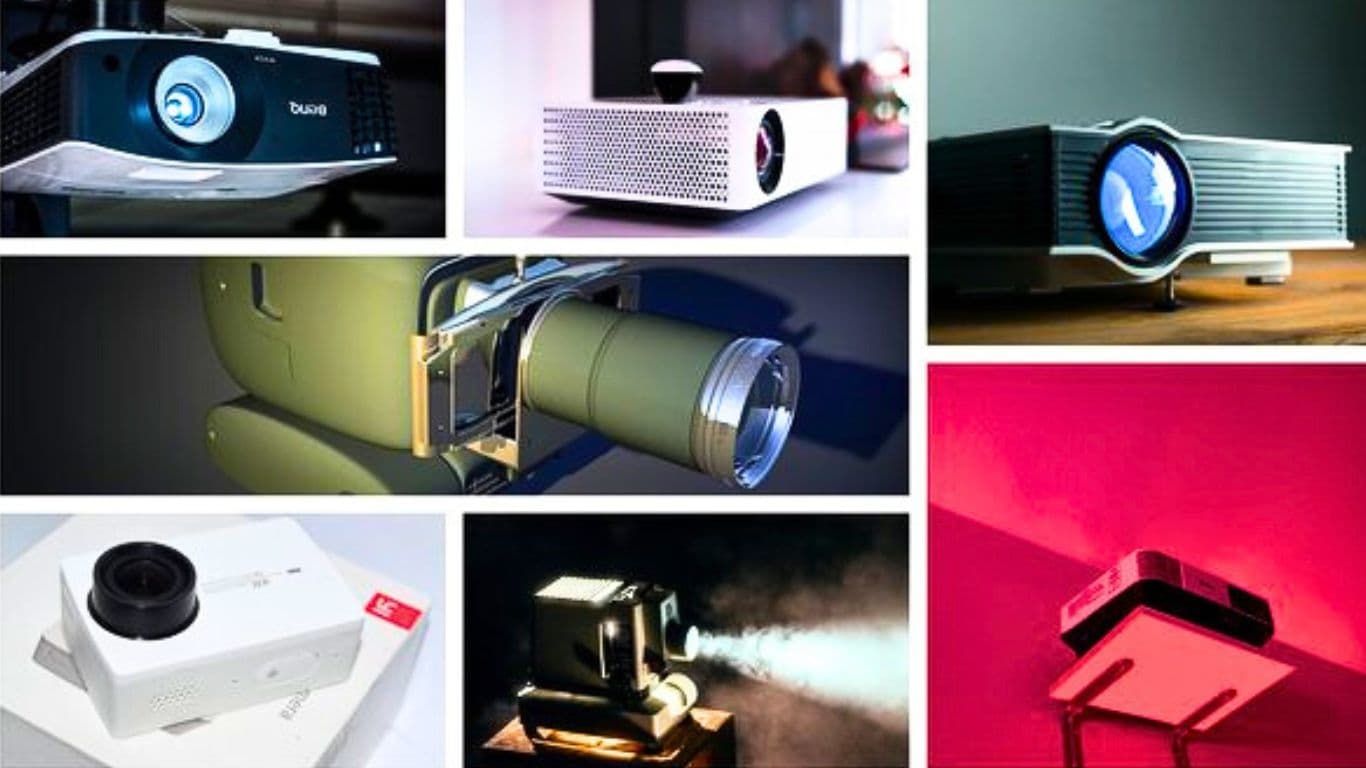

Laser Projectors
Laser projectors use laser diodes to generate light, providing superior brightness, color accuracy, and longevity. They are commonly found in large venues, theaters, and high-end installations.
Interactive Projectors
Interactive projectors allow users to interact with the projected content using touch or gesture-based technology. They are commonly used in classrooms, boardrooms, and collaborative environments.
Projector Lifespan Vs TV
The lifespan of projectors and TVs can vary significantly due to differences in technology and usage patterns. Here’s a comparison of the two:
Projectors
The lifespan of a projector is primarily determined by the type of light source it uses. Traditional lamp-based projectors typically have a lamp life ranging from 2,000 to 10,000 hours, depending on the model and usage.
However, advancements in projector technology have introduced LED and laser projectors, which can last up to 20,000 hours or more. Proper maintenance and usage can help maximize a projector’s lifespan.
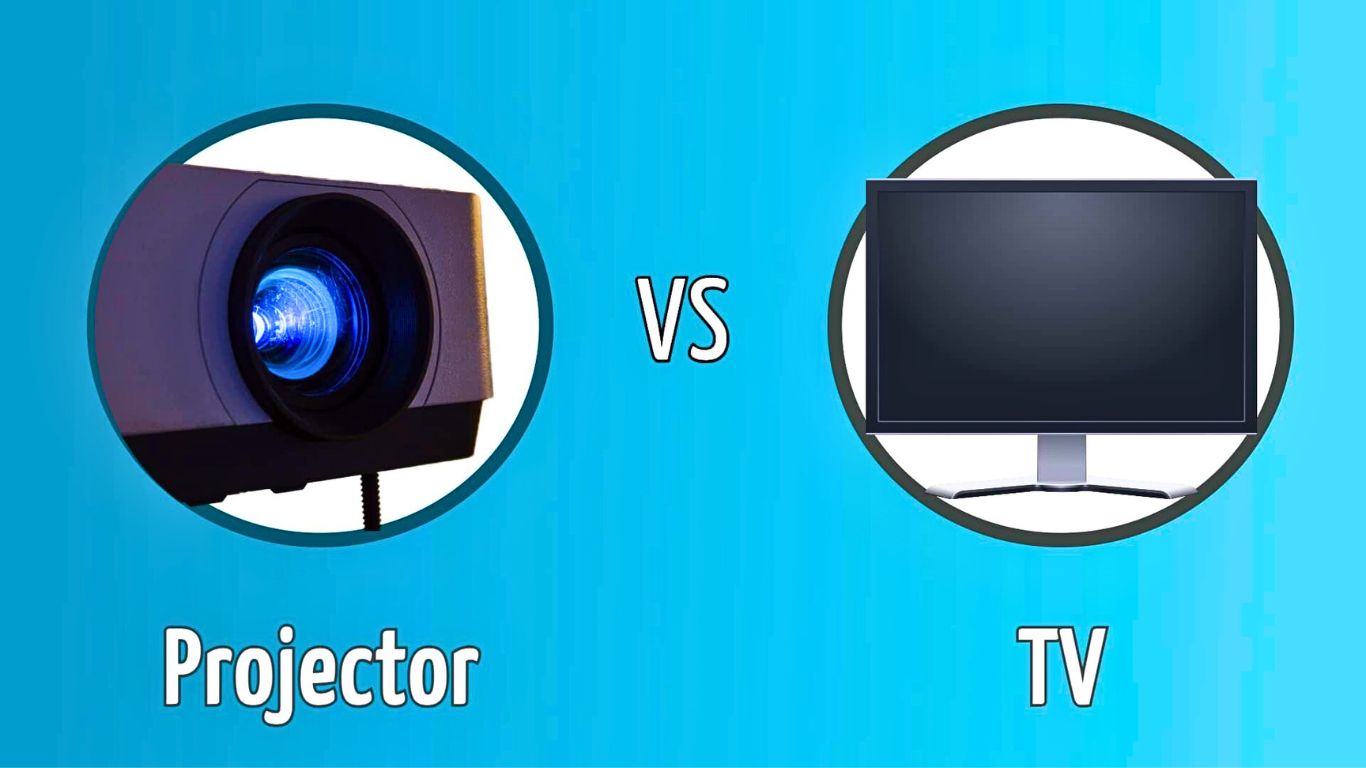

TVs
Most modern TVs use LED or OLED technology, which generally has a longer lifespan than traditional projectors. However, it’s important to note that these estimates can vary based on usage and viewing habits and environmental effects like daylight, etc.
Image Quality (Projector Vs TV)
Projectors can offer larger screen sizes, making them ideal for creating immersive viewing experiences in home theaters or large venues. However, their image quality can be influenced by ambient light conditions and screen size. You must know how many Lumens for an outdoor projector.
On the other hand, TVs generally provide consistent image quality in various lighting conditions and screen sizes, making them well-suited for everyday viewing in living rooms and bedrooms.
How long do Led Projectors last?
These typically have a longevity lifespan compared to traditional lamp-based projectors. The lifespan of LED projectors can vary depending on the manufacturer, model, usage patterns, and environmental factors.
It’s important to note that the lifespan of an LED projector is measured in hours of operation, meaning the number of hours the projector’s LED light source remains functional before reaching its end of life.
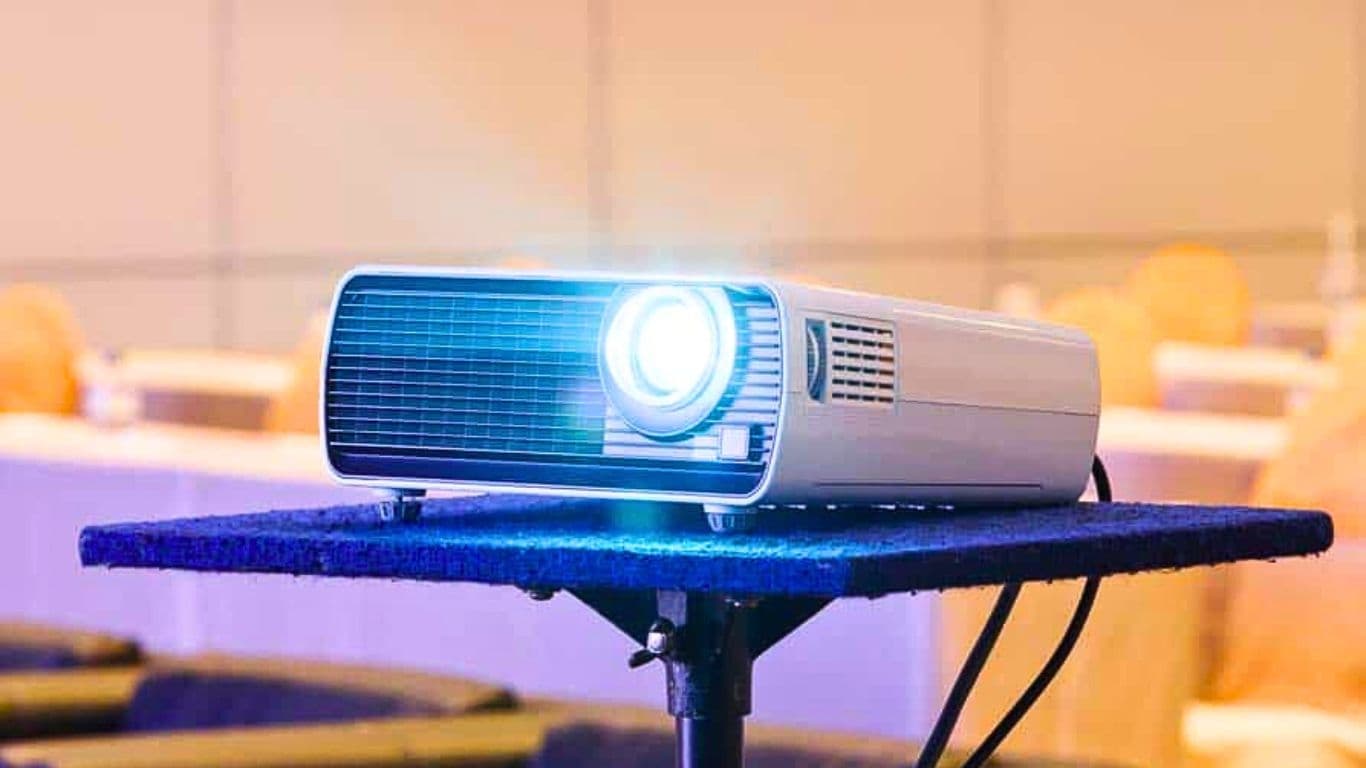

Unlike traditional lamps that may need replacement after a certain number of hours, LEDs gradually dim over time but can still be used even after their rated lifespan.
LED projectors’ longer lifespan is one of their key advantages, as it reduces the need for frequent replacements lowers overall maintenance costs, and easy to understand how to hang a projector screen.
How long do Laser Projectors last?
These projectors have an impressive lifespan compared to traditional lamp-based and even LED projectors which shows how projectors work. The lifespan of a laser projector can vary depending on the manufacturer, model, screen size, inner materials, usage, and other factors.
These projectors use laser diodes as their light source, which offers several advantages over traditional lamps and LEDs. Laser diodes are highly efficient and generate minimal heat, which contributes to the extended lifespan of laser projectors.
Additionally, they provide consistent brightness and color performance throughout their half-life, without the gradual dimming associated with traditional lamps and LEDs.
The longevity of laser projectors makes them ideal for various applications, including large venue installations, digital signage, home theaters, and professional presentations.
How long can a Projector un Continuously?
The continuous runtime of a projector can vary depending on the specific model and its design. Most modern projectors are built to handle continuous operations for extended periods, but the actual runtime capability may differ among different projectors.
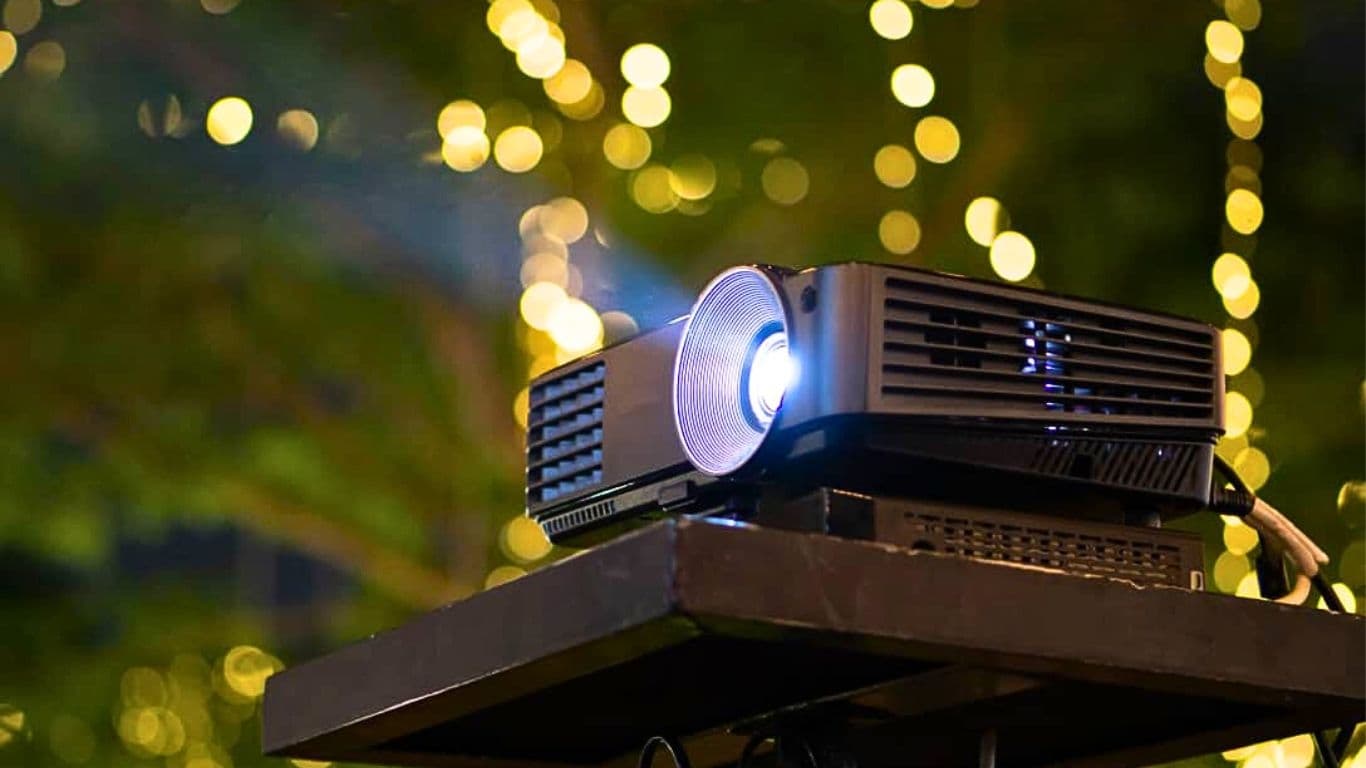

The continuous runtime of a projector is typically specified by the manufacturer in the projector’s user manual or technical specifications.
For some projectors, continuous operation may be limited due to factors like the projector’s cooling system, which can affect its ability to dissipate heat generated during operation.
As a general guideline, many projectors can run continuously for around 24 hours without any issues, especially if they are designed for commercial or professional use, such as in digital signage or large venue installations.
How long do Projector Bulbs last?
The lifespan of projector bulbs, also known as projector lamps or light sources, can vary depending on the type of projector and the specific model. Projector bulbs are typically rated in terms of their “lamp life,” representing the number of hours the bulb is expected to function before its end of life.
For traditional lamp-based projectors, the lamp life can range from approximately 2,000 to 10,000 hours, with some high-end models reaching up to 15,000 hours.
However, many projectors’ average lamp life falls within the 2,000 to 5,000-hour range. On the other hand, modern projectors using LED or laser light sources offer significantly longer lifespans.
It’s important to note that the actual lamp life can be influenced by factors such as the projector’s usage patterns, operating environment, and the quality of the bulb. These things depend on how to use a projector outside during the day.
LCD projector lifespan
LCD projectors are equipped with traditional lamps, DLP vs. LCD Projector, or laser light sources, each offering a different lifespan. Here’s a breakdown of the typical lifespan for LCD projectors based on their light sources:
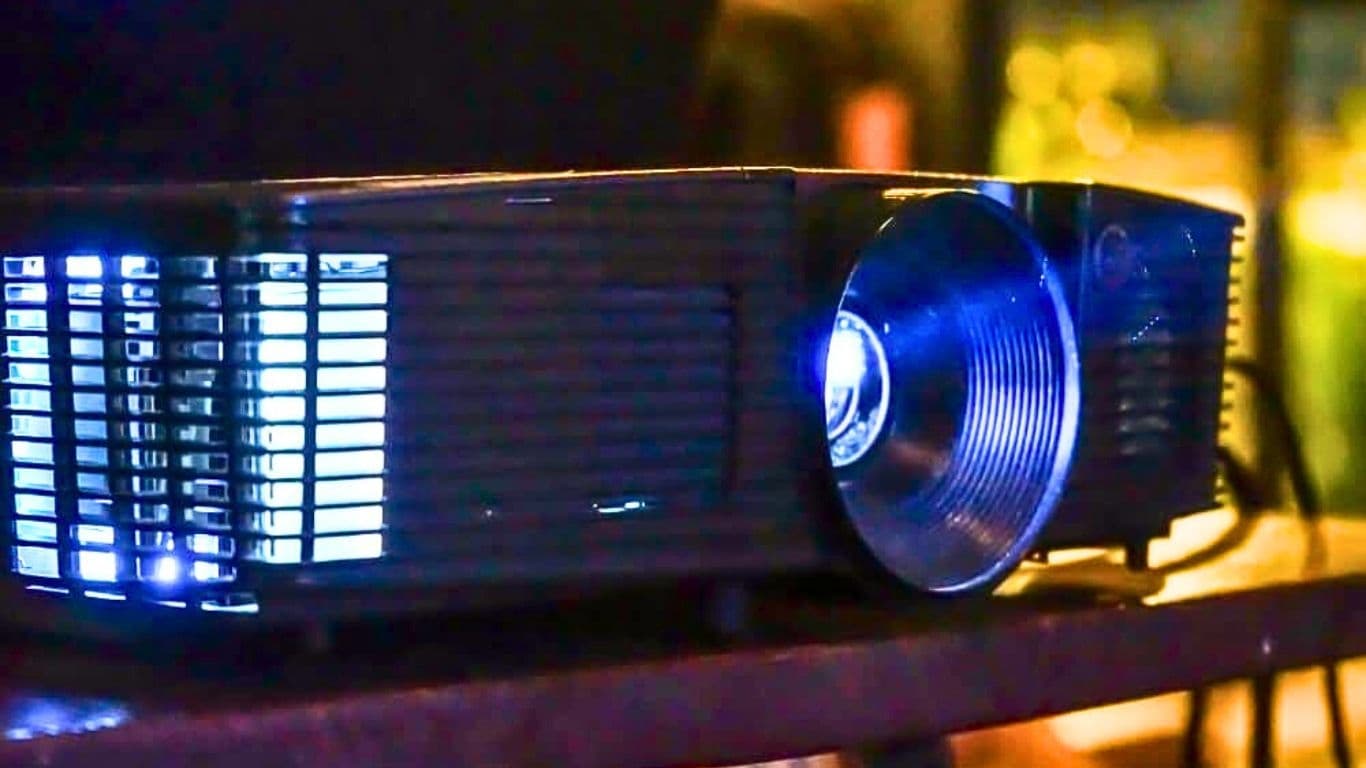

Lamp-Based LCD Projectors
LCD projectors using traditional lamps usually have a lamp life ranging from approximately 2,000 to 6,000 hours. High-end models may offer longer lamp life, reaching up to 10,000 hours. It’s essential to check the specific model’s specifications to know its exact lamp life, which depends on the best projector screen material.
LED-Based LCD Projectors
LED projectors are more energy-efficient and durable than lamp-based models. LED-based LCD projectors can last between 20,000 to 30,000 hours or more which is best screen timing. This extended lifespan makes them a popular choice for both professional and personal use.
Laser-Based LCD Projectors
Laser projectors utilize laser diodes as their light source, providing excellent brightness and longevity. Laser-based LCD projectors can last between 20,000 to 50,000 hours or even more, depending on the model and usage, which can decrease because of high brightness in the daytime.
Tips to increase Projector’s life
Increasing the lifespan of your projector involves proper care and maintenance. Here are some valuable tips to help you extend the life of your projector:
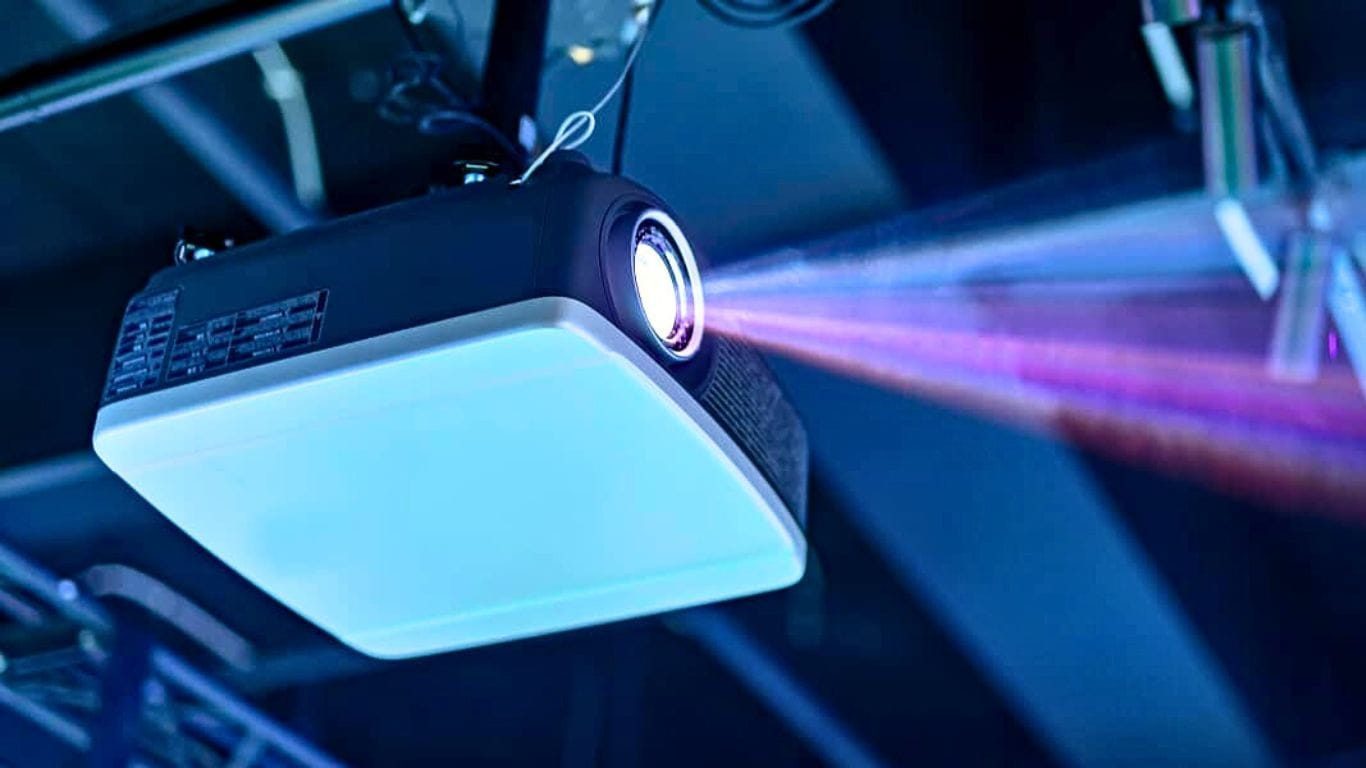

- Proper Ventilation: There should be someplace around for ventilation which makes its activity better. Overheating can significantly impact the projector’s components and reduce its lifespan. Avoid placing it in enclosed spaces or near other heat sources.
- Clean and Dust-Free Environment: Keep the projector and its surrounding area clean and free from dust. Dust buildup can block ventilation and cause the projector to overheat. Regularly clean the air filters and other components as per the manufacturer’s instructions.
- Use Eco Mode: Many projectors offer an “Eco” or “Low Power” mode that reduces brightness and extends lamp life. Consider using this mode when the highest brightness is not necessary. Do you just know how to get sound from the projector to the speaker?
- Adjust Brightness and Contrast: Running the projector at maximum brightness constantly can shorten the lamp’s life which is important for the best daylight projector.
- Properly Power Down: After use, allow the projector to cool down before turning it off. Follow the recommended shutdown procedure to avoid any abrupt power loss.
- Use High-Quality Input Signals: Poor-quality input signals can strain the projector’s electronics and reduce its performance. Ensure you’re using high-quality cables and video sources.
- Regular Maintenance: Follow the manufacturer’s maintenance schedule for your specific projector model. This may include replacing the lamp, cleaning the projector, and updating firmware when necessary.
How Long Do Projectors Last – FAQs
Conclusion
Drawing from years of experience and expertise, we have curated a list of practical measures that encompass proper ventilation, cleanliness, appropriate usage patterns, and the best projector screen size.
With these professional strategies at your disposal, you can confidently safeguard your investment and unlock the full potential of your projector. It’s time to enhance the projector’s lifespan to get more advantages without interactions.
